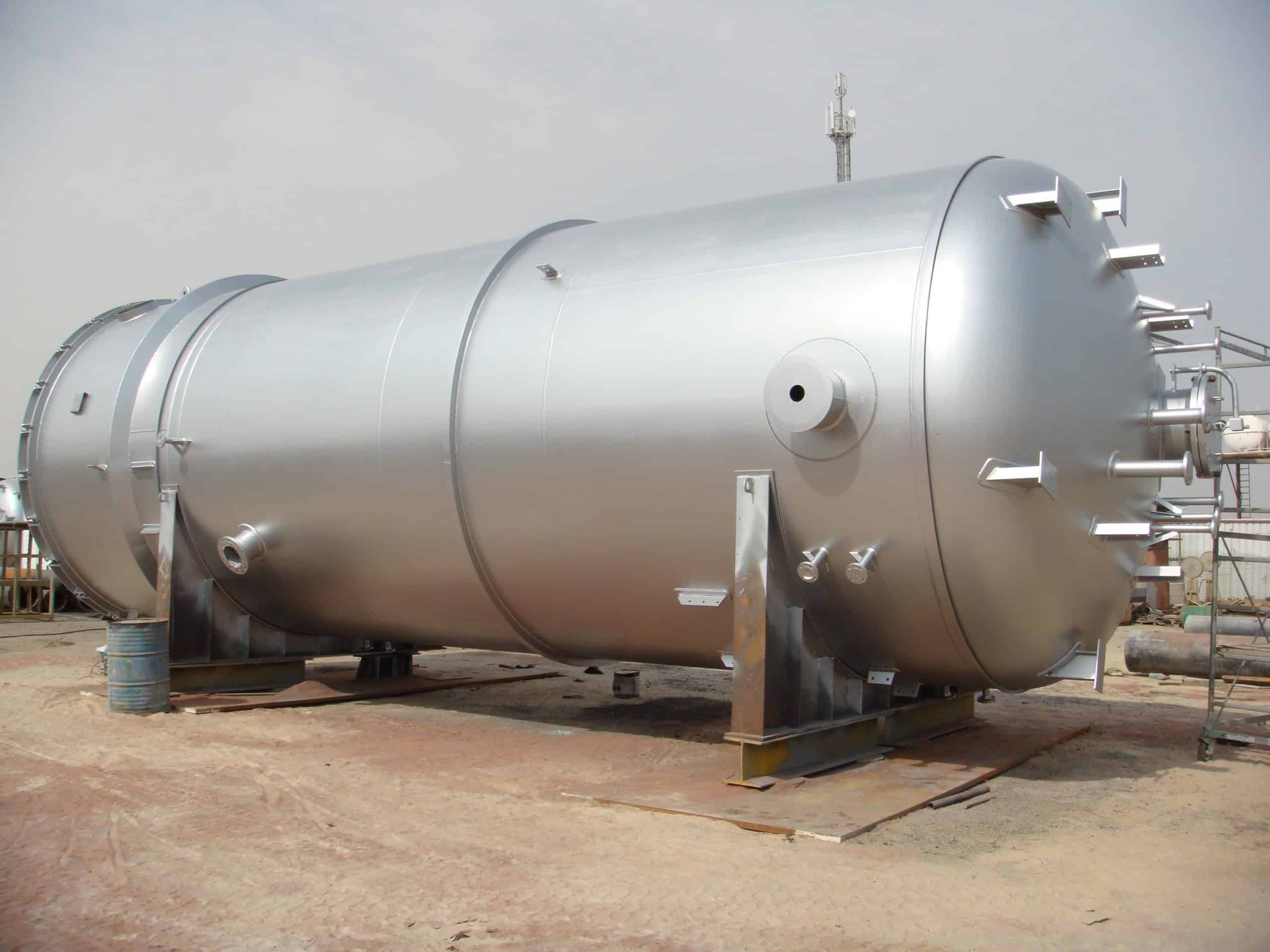
When planning PWHT of any pressure vessel the unequivocal number one concern should be vessel integrity during the heat cycle as this is where any damage is going to happen. The cost of having a bad PWHT and causing damage to the material, internals, externals, or the vessel integrity itself could have irreversible damage. It is therefore prudent to run engineering calcs, finite element analysis or wind and weight load forecasts prior to the post weld heat treatment.
There are a few different ways to carry out PWHT on pressure vessels. The most common is by electrical resistance method, where heating pads are applied direct to vessel wall internal or external to cover the required soak band, (SB) heat affected zone (HAZ) and thermal gradient areas then encapsulated both inside and out with insulation. The other less common but more cost effective is the fuel fired method, where the vessel is encompassed with insulation, Hi Velocity burners are placed though firing ports or manways along with distribution tubes to utilize the vessel as its own furnace.
The PWHT governing codes and recommended practices that drive the PWHT conditions can mostly be found in API, ASME Section VIII and NBIC. Recently some clients are insisting on using WRC452 recommendations for PWHT which is referenced in ASME 2016 Edition.
Where a crane is required, someone will have worked engineering calcs, for this exercise calcs are assumed.
All of the above can be applied to the PWHT of a vessel in horizonal position. For vessels with a span of more than 15’ between saddles it is advisable to add additional support.
Where saddles are bolted to the foundation these bolts need to be loosened. (Similar to skirt scenario above)
You may have to cut slits in the saddle base and have plates inserted between foundation and base of saddle to allow vessel to slide / grow during the heat cycle.
Heat treatment of vessels are in general the most difficult of heat treatments and most often fall within critical path, pressure intensifies. There is no room for error. It takes a team effort to ensure everything is lined out and executed flawlessly. Having SME’s along with a contractor that has experience as well as technical and practical nous is advised.

Gerry is CEO and founder of AxiomHT, his experience in the heat treatment industry is unsurpassed and this experience has led to the application of an engineered solution in the form of patent protection on some ground breaking heating and cooling solutions.
With over 40 years industry experience his ability to quickly assess and guide customers on heat treatment, complex geometries and code stipulations keeps him at the forefront of customers minds when heat treatment services are required.
His track record and ability to break things down into easily to digest morsels of info make him the natural go to for planning, costing and scheduling of heat treatment projects
Having taken time out to focus on training and certification in an industry that has been self-certified his focus on addressing the pending code changes along with the new technology AxiomHT brings to the market is a very welcomed addition back into Heat Treatment field services.
Good day! I just wish to give you a huge thumbs up for your excellent information you have got here on this post. I am coming back to your blog for more soon. Good day! I just wish to give you a huge thumbs up for your excellent information you have got here on this post. I am coming back to your blog for more soon. נערות ליווי בקיסריה
Thank You, we appreciate the support